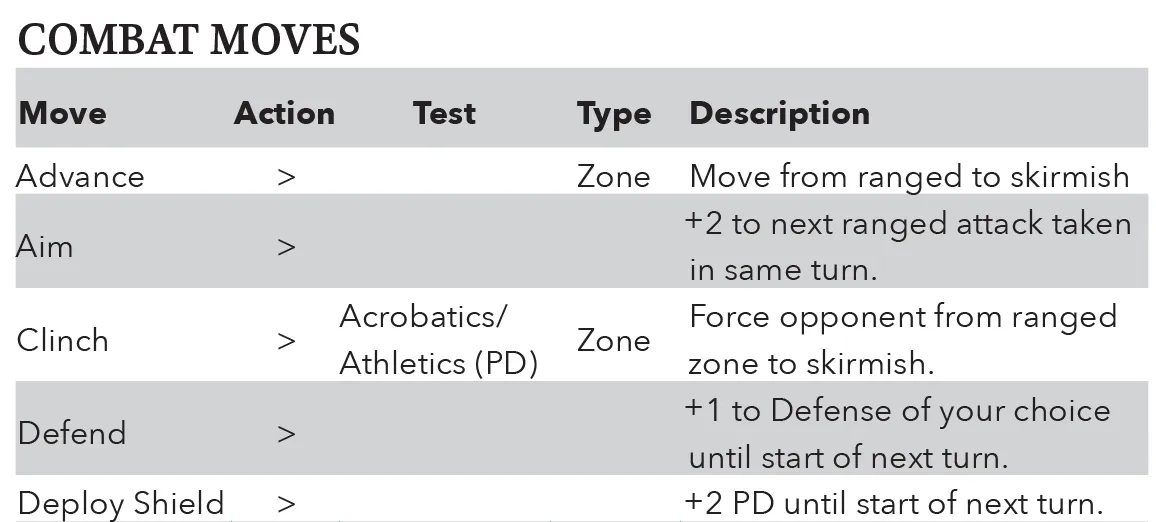· Rob Boyle · Rules · 3 min read
Action Economy
Let's talk about the Snarl's action economy.


We went through many iterations of the rules before settling on a 3-action economy for The Snarl. In other words, on your turn, your character has 3 actions to spend. The specific things you can do are defined as moves, and each move costs a specified number of actions. Most moves use a single action, more complex ones cost 2 actions, and something that consumes your entire turn takes 3.
If you’ve played Pathfinder 2 you are familiar with this kind of economy. Ours is similar, and it’s nothing new or groundbreaking on its own, but it does include some twists to fit with our other mechanics. We chose it over systems that broke down your actions into different types (like D&D’s action/movement/bonus actions, or Draw Steel’s main action/move/maneuver) because we preferred its more open-ended aspects.
On top of your 3 actions, you also get a single reaction each turn. Reactions may only be used when their triggering conditions are met. For example, if someone disengages from melee with you, you may use your reaction to take an Intercept move and get a free attack in.
We’ve talked before about how we handle positioning and movement with zones in combat. In our system, movement is tied into you the moves you make. If you want to take a Disengage move and switch from the engaged zone to the skirmish zone, that costs 1 action — and your opponent can use their reaction to make a free attack. If you instead take a withdraw move, costing 2 actions, you move from engaged to skirmish with triggering an Intercept attack.
In combat, you can choose to spend all of your actions making attacks. However, each attack after the first is more difficult and inflicts a jolt upon you, so it comes with a cost, as you are opening yourself to attacks. Characters who end their turn in the skirmish zone must also spend 1 of their 3 actions making a Skirmish move or they take a jolt (if you’re not dashing around to avoid attacks, you’re an easier target).
Naturally, there are abilities that cut down the action costs of certain moves, make it easier to make multiple attacks, and so on. There are also plenty of moves to spend your actions on that don’t involve attacks, from bolstering your defenses and protecting others to distracting opponents or taunting them.
Overall it’s a pretty straightforward system and we’re happy with it, though of course we are still refining some of the action costs. That’s where you can help out with our upcoming open playtest!



